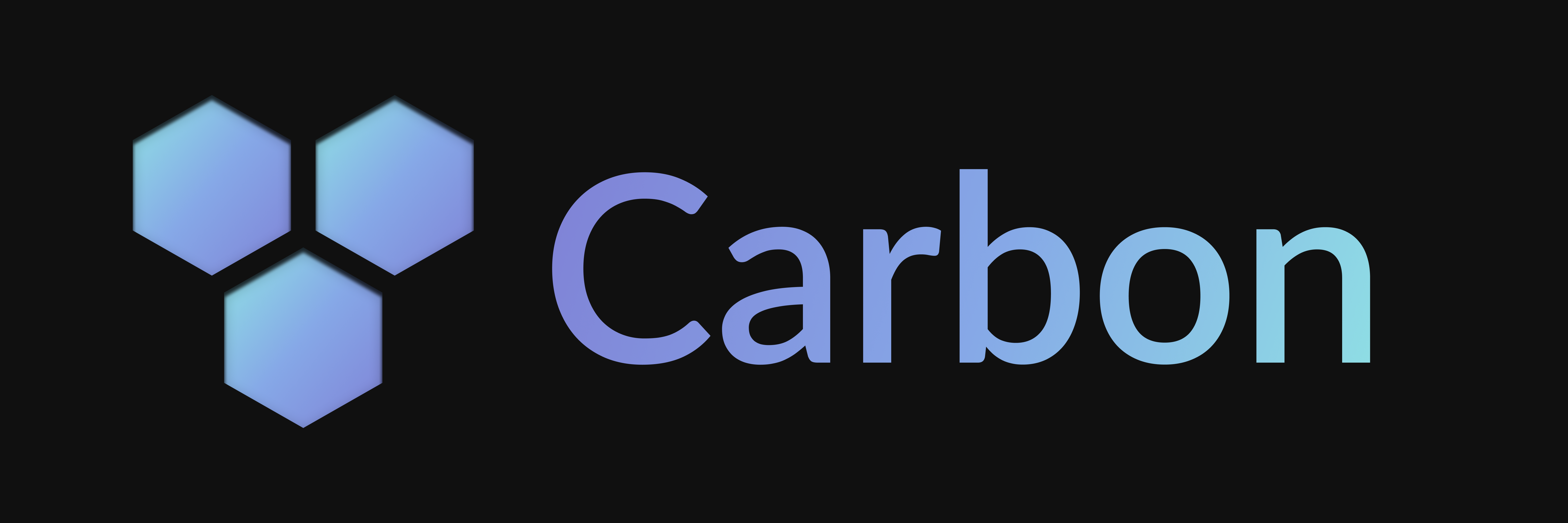Next.js
Learn how to set up and deploy your Carbon bot using Next.js, including development and production environments.
Automatic Setup
Quickly set up your Carbon bot with minimal configuration using the automatic setup guide.
Other Runtimes
Explore how to set up and deploy your Carbon bot using different runtimes.
Manual Setup
This is a continuation of the Basic Setup guide. If you haven't already, make sure to follow the steps in the guide before proceeding.
Move Handle File
Ensure the file where you export your handler is placed at src/app/api/discord/[...slug]/route.ts. The catch all slug is necessary for handling each of the routes Carbon creates.
Create a Handler
Using the @buape/carbon/adapters/fetch package, you can create a handler that you can then export for Next.js API routes. This will handle incoming interactions and route them to your bot.
import { createHandler } from '@buape/carbon/adapters/fetch'
const client = new Client( ... )
const handler = createHandler(client);
export const GET = (req: Request) => handler(req, {});
export const POST = (req: Request) => handler(req, {});Running in Development
Start a Proxy
Discord requires a public URL to route interactions to your project. To achieve this, you'll need to set up a proxy. The simplest way to do this is by using localtunnel. This created public URL will be referred to as PUBLIC_URL in the following steps.
npx localtunnel
pnpm dlx localtunnel
yarn dlx localtunnel
bunx localtunnel
You can use the --subdomain flag to specify a custom subdomain for your proxy.
Set Environment Variables
First things first, you'll need to grab your Discord application's secrets from the Developer Portal and paste them in your .env.local file.
BASE_URL should be your public URL plus the relative path to your Next.js API routes, likely /api/discord.
You can rename this variable if it conflicts with your existing environment variables.
Configure Portal URLs
Now that you have a public URL, navigate back to the Discord Developer Portal and set the "Interactions Endpoint URL" to <BASE_URL>/interactions.
Invite your App
You'll need to invite your app to your server to interact with it. To do so, navigate to the Installation tab of your app in the Discord Developer Portal.
Deploy Your Commands to Discord
Finally, to deploy your commands to Discord, navigate to <BASE_URL>/deploy?secret=<DEPLOY_SECRET> in your browser. This will send your command data to Discord to register them with your bot.
To deploy commands to specific guilds, add a guildIds property to your command classes with an array of guild IDs. To deploy all commands to certain guilds during development, set the devGuilds option in your client config (e.g., from an environment variable). Commands with guildIds are only available in those guilds; commands without are deployed globally. If devGuilds is set, all commands are deployed to those guilds instead of globally.
Deploying to Production
Your new app can be deployed anywhere you can run a Next.js app. For detailed instructions, refer to the Next.js deployment documentation. Once you do have a deployment, remember to configure your portal URLs to the URL of your running app.
Remember to deploy your commands to Discord using <BASE_URL>/deploy?secret=<DEPLOY_SECRET>.
Last updated on
